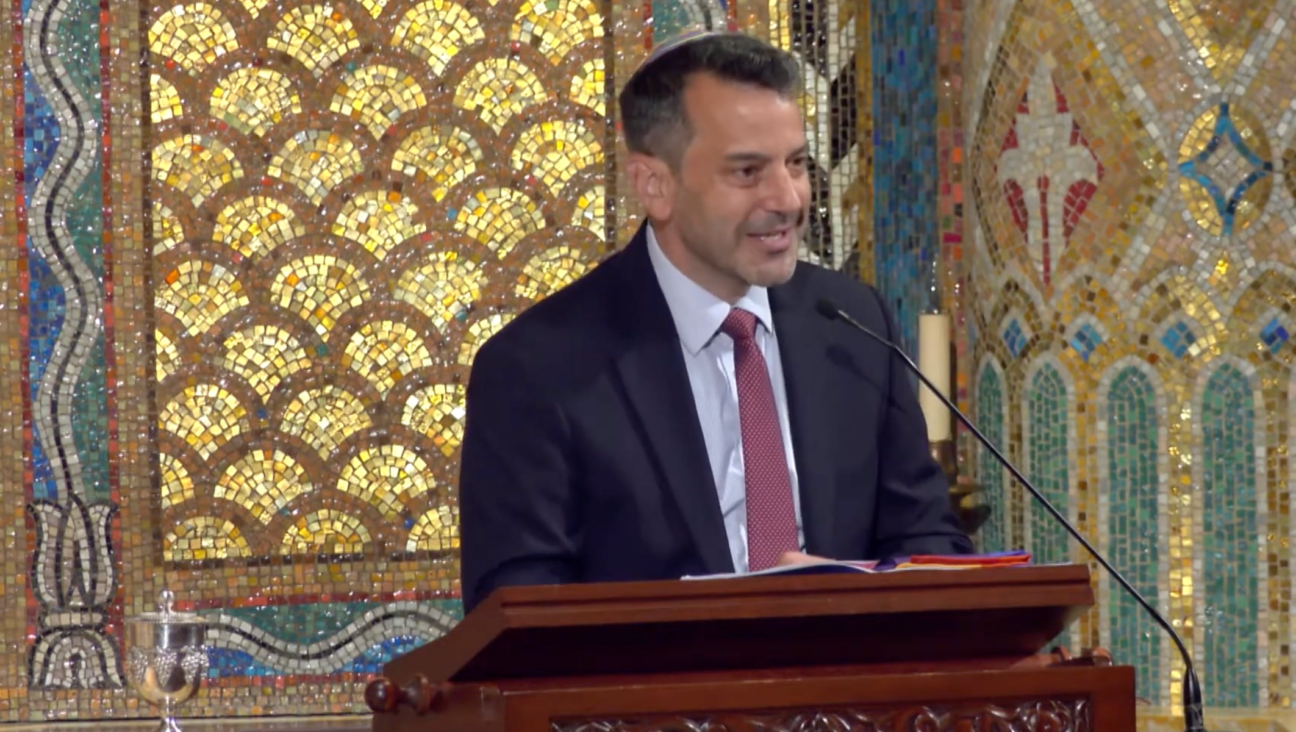From China, With Love

Image by Courtesy of Linda Goldstein Knowlton
Linda Goldstein Knowlton is in New York City promoting her new documentary, “Somewhere Between,” and Skyping with her daughter, Ruby, who is in California, when a telephone call interrupts.
She asks the caller to hang on; sending Ruby off to school is clearly more important than promoting her film — especially since Ruby was, in a way, the genesis of the project. “Somewhere Between” is about children like Ruby, who were adopted from China.

Image by Courtesy of Linda Goldstein Knowlton
Since 1979, when China introduced its one child policy, there has been a plethora of children — mostly girls — abandoned there. About 175,000 of them have been adopted worldwide; 80,000 have found homes in the U.S.
“Somewhere Between” is centered on four teenagers from around the country who, as one describes herself, are bananas: yellow outside, white inside. It is also about wonderfully caring and giving parents. After witnessing the conditions in some orphanages, the mother of one child makes it her mission to raise funds and send supplies there, which she personally delivers. While the children’s lives are almost certainly better than they would have been in China, they suffer identity crises. One bursts into tears when she describes how she was abandoned by an older step-brother, who left her sitting on the sidewalk, though he promised to return.
The film is intelligent, poignant and likely to provoke tears. After kissing Ruby goodbye, Goldstein Knowlton spoke to The Arty Semite about adopting Ruby, what she learned from the film, and her own “Jewish cred.”
Curt Schleier: What prompted you to adopt a daughter?
Linda Goldstein Knowlton: My husband and I — it might sound corny to some people — feel like global citizens. We always talked about adoption as something that was right for us and we really wanted. We looked at different ways to adopt from all over the world and really liked the process in China. We always had this interest in Chinese culture and with the [male] gender preference and one child policy, all these things came together and we adopted our daughter in 2006. She was 10 months old and has been a joy ever since — except when she’s a pain.
How did the film come about?
We were in post-production on [my previous documentary], “The World According to Sesame Street,” while my husband and I were starting the whole paperwork process. As a filmmaker, I try to focus on issues interesting to me. In doing the adoption process and learning more and more about China, so many questions came up I knew I was going to explore some piece of this in my next film.
Having grown up with my own identity questions as everyone does — it’s a universal problem — I realized my daughter was going to have unique identity experiences. Being a good Jewish parent I wanted to minimize her pain and provide what comfort I could to help her through adolescence; it’s a time when you don’t want to stand out, but fit in. There are 80,000 children adopted from China in the U.S., 98% of them girls. Thousands of them are already teenagers, so I figured why not talk to the professionals about what life is like? Why not talk to them?
How did you choose the girls you selected for the film?
I’m a member of the California branch of Families With Children From China (FCC), which has branches in all 50 states and Canada. I reached out through FCC branches all over the country. I wanted to show a diversity of experience. I really wanted to have a bat mitzvah film. I’d found someone who just had a bat mitzvah, but I never found someone who was about to have one. I interviewed five other young women and they were all lovely. But there’s a certain chemistry, and when I met the four I filmed I immediately started shooting. I told them, if we’re ever filming something and you don’t feel comfortable, tell me. I’m not making a reality television show. I’m not looking for a train wreck. I look at them and I see my daughter.
Did you learn anything during the filming?
The big thing is that it’s [Ruby’s] journey. I can be there to love and support her, but I can’t shield her from the things that are complicated in life. I also learned that Ruby is really part of an amazing community. When she has questions she won’t feel alone. These girls taught me a lot. They are my daughters and Ruby now has four fantastic big sisters.
What is your background like?
I grew up in Highland Park, IL. I’ll give you my Jewish cred. I went to Sager Solomon Schechter Day School. I have two older brothers. The oldest is Orthodox and lives in Jerusalem. He’s a neuroscientist and has five children and as of a couple of days ago his third grandchild. I was bat mitzvahed at Beth El and I went very happily to Habonim camp. I also lived on a kibbutz.
How is Ruby being raised?
Ruby is being raised a little bit of everything, we celebrate the Jewish holidays. We did a baby naming. She was named after my mother. We also celebrate Chinese New Year, and as my husband’s family is not Jewish, celebrate an American-style Christmas. It’s a very cultural Christmas. Will Ruby identify as Jewish, that’s a good question, I’m not sure — but it is a big part of our lives.
”Somewhere Between” opens in New York August 24, in Los Angeles September 14, with a national rollout to follow.
Watch the trailer for ‘Somewhere Between’:
A message from our Publisher & CEO Rachel Fishman Feddersen

I hope you appreciated this article. Before you go, I’d like to ask you to please support the Forward’s award-winning, nonprofit journalism so that we can be prepared for whatever news 2025 brings.
At a time when other newsrooms are closing or cutting back, the Forward has removed its paywall and invested additional resources to report on the ground from Israel and around the U.S. on the impact of the war, rising antisemitism and polarized discourse.
Readers like you make it all possible. Support our work by becoming a Forward Member and connect with our journalism and your community.
— Rachel Fishman Feddersen, Publisher and CEO























